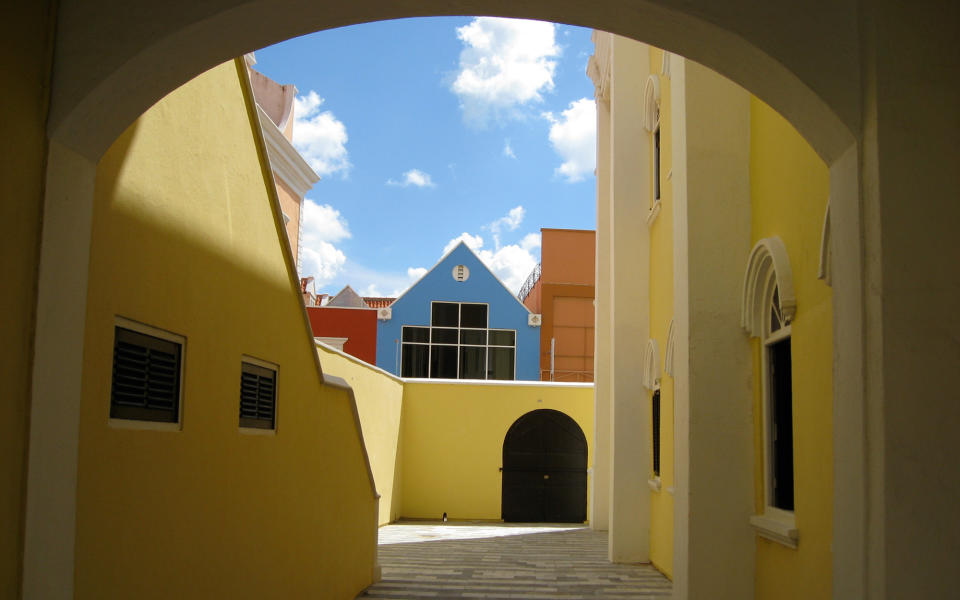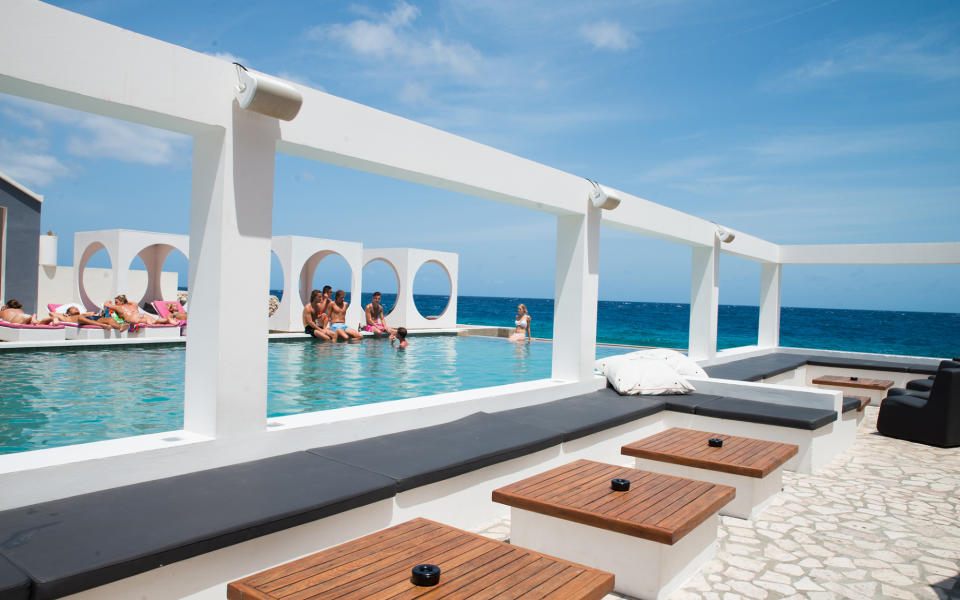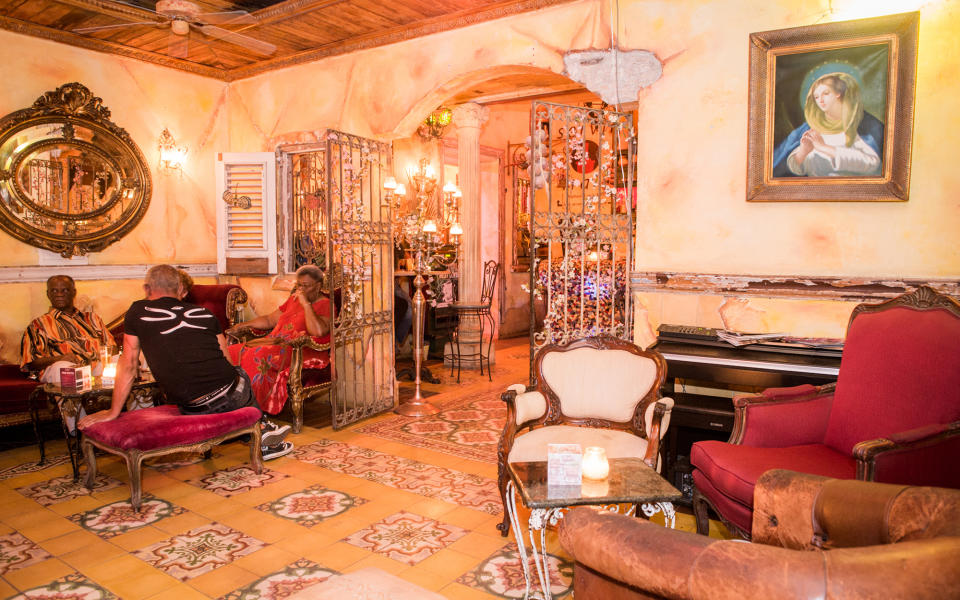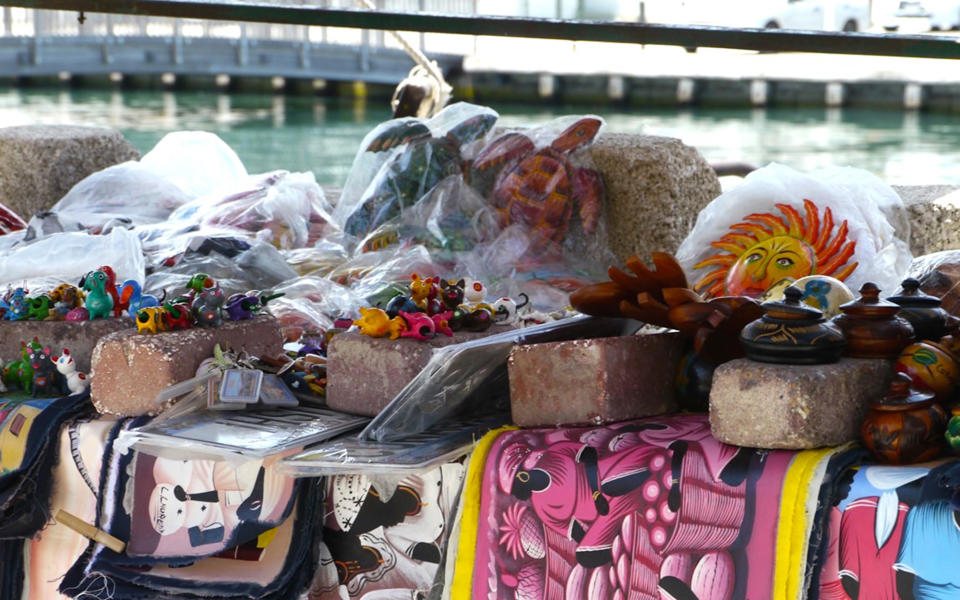The Art and Architecture of Willemstad, Curaçao
It’s fitting that Curaçao’s name is a derivative of coração, the Portuguese word for heart. For centuries the Caribbean island was the pulsing center of European trade in the region and a melting pot for Dutch, Iberian, South American, African, tropical, and even Sephardic Jewish influences (one of the oldest and most popular buildings on the island is 400-year-old sand-floored temple Mikva Israel-Emanuel). Colonized by the Netherlands after its independence from Spain in 1634, Curaçao’s capital, Willemstad, has a distinct architectural tradition kept alive by its designation as a UNESCO World Heritage City. In recent years the city has also fostered a nascent design scene with global reach.

At first glance Willemstad looks a little like a candy-coated version of Amsterdam. The main canal is lined with the bright pink, yellow, and teal buildings that run along Handelskade Street in the Punda District; the law requires that they be kept in a vibrant color palette and repainted every two years. Nearby, the Otrobanda District is better known for its numerous cobblestone alleyways, reminiscent of 17th-century Dutch provincial towns. The area also contains several European-style open-air plazas, most notably the Floating Market, which sells fresh fish caught off the coast of Venezuela, local fruits and vegetables, and artisanal crafts and jewelry.
Related: Top All-Inclusive Curaçao Resorts
The most contemporary thing about the island is its dedication to upcycling. Over the last 20 years this practice has been integral to the renovation of many of the city’s decaying colonial structures, turning them into stunning hotels, restaurants, and homes. Arguably one of the most interesting neighborhoods is Pietermaai, a former slum that in six years went from being the most dangerous to the most desirable district. It is now home to trendy bars, restaurants, vivid street murals, and luxury apartments, and has an atmosphere that Marijke Hoos, a lifelong Curaçao resident and the marketing and PR manager for Pietermaai, compares to New York City’s Meatpacking District. To walk through is to visit a tropical version of Cape Town’s brightly hued Bo-Kaap District, mixed with the old-world elegance of New Orleans. The area even has a New Orleans–themed restaurant, Mundo Bizarro, that features a sexy, shabby-chic “House of the Rising Sun” vibe complete with vintage upholstered sofas, smoky mirrors, a specialty cocktail menu, and a charming cobblestone open-air eating section. "The Dutch like to be outside," jokes Hoos. "Our windows are always open." Nearby, the Saint Tropez Ocean Club is an art deco masterpiece. By far the sleekest design on the island, it was conceptualized entirely by owner Michel Oliemuller and is a little slice of white-walled Ibiza in the Caribbean. Just a little further is the Miles Jazz Café, home to many of the island's most popular murals.
Across the iconic floating Queen Emma Bridge on the other side of the river is Kura Hulanda—another former slum given new life. Renovated by Dutch entrepreneur Jacob Gelt Dekker in 1998 and turned into a resort and museum, Kura Hulanda features 67 hand-painted guest rooms (decorated with carved mahogany and teak), two pools, five restaurants, a sculpture garden featuring the work of local artist Hortense Brouwn, and more design installations than you can shake a guidebook at. There is also a museum on premises featuring rare African art and chronicles the island's history of slavery. Just outside the gates of Kura Hulanda is De Gouverneur, a Dutch-Caribbean restaurant built inside the former governor’s house. Large wooden windows overlooking the river create the perfect evening ambiance, but a light lunch in the indoor cobblestone garden is ideal for the romantic traveler.

Kura Hulanda and Pietermaai weren’t the only spots to receive recent makeovers. For years over 100 Curaçao Landhuizen—plantations from the 18th and 19th centuries—sat abandoned or in disrepair. In the last few decades they have been turned into restaurants (Dokterstuin), distilleries (Chobolob), and hotels, including the Santa Barbara, which is now a sprawling, haute hacienda–style complex that houses one of the most pristine beaches on the island.
Another spot given a face-lift was the Avila Hotel and Blues Bar, one of the oldest establishments on the island, whose interior was revamped in 1996 by Florida architect Dan Duckham. Its famous Octagon hotel wing, one of the island’s best design treasures, was renovated by Mike Koch at IMD Design around the same time, and Peter Kletzenbauer renewed the hotel’s La Belle Alliance rooms in 2012. Paintings by local artist José Maria Capricorne adorn the walls of the property.
The island also features cutting-edge luxury designs. Located in the Jan Thiel area, Papagayo Hotel, Resort and Spa is one of the most design-centric hotels on Curaçao. With a tucked-away, minimalist white facade facing the island’s iconic blue waters, it's literally a hideaway with cosmopolitan flare. You don’t have to be a guest to enjoy the resort or its restaurants, including the Papagayo Specialty Restaurant. Nestled among the resort’s thatched roofs and palm trees, this fine-dining space serves everything from Caribbean lobster—a slightly buttery, meatier counterpart to its northern cousins—to fusion dishes like Wagyu tenderloin with potato mousseline, haricot verts, truffle shavings, and Pedro Ximenez. Another on-premise eatery is Zest Mediterranean—a beach bar that features light Greek fare and views of the water.

The real soul of Curaçao, however, is its artists. To see more of their work, rent a car and drive to Jan Kok, an 18th-century plantation house that is now home to the studio, gallery, and store of former beauty-queen-turned-painter Nena Sanchez, one of the island’s most celebrated creators. Sanchez’s pueblo-style split-level ranch is reminiscent of Frida Kahlo’s Casa Azul with its jutting organ cactus and eclectic folk designs. Jan Kok is rumored to be haunted—there’s a delightful eeriness to the space. Walk through the sculpture garden and you’ll feel like you’ve stepped onto the set of a Jodorowsky film, as tarot-style paintings sidle up next to larger-than-life sculptures of indigenous women. You can also visit the studio of Yubi Kirindongo, another established artist on the island, where you can interact with works created from recycled materials like plastic, paint chips, and car bumpers. Other island artists gaining recognition include Avantia Damberg and Herman Van Bergen, whose works you can read about on Curaçao’s official arts page.

There are also several galleries and museums not to be missed, including the contemporary art center Instituto Buena Bista and the Alma Blou, the oldest and largest gallery on Curaçao. The Landhuis Bloemhof also offers exhibitions, lectures, and creative workshops in a renovated space filled with antique furniture. Walk through the wing that formerly housed stables and barns and soak in their archives, library, and reading room, which was the former studio of sculptor May Henriquez.
Best known for its beaches, wildlife, and thriving music scene, Curaçao also boasts a design scene that is not be missed. Just four hours from JFK with the rollout of a new JetBlue flight, the island is the perfect spot for those seeking a quick tropical vacation with a bit of culture on the side.

